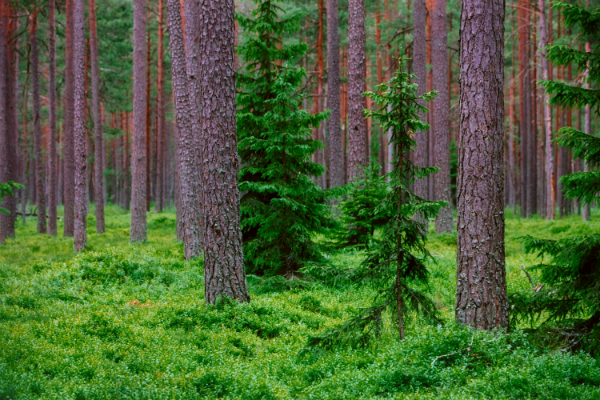The Nordic Forests – Our Trump Card for Climate Work
Finish and Swedish scientists believe that growth of Nordic forests should be promoted to increase both growing stock and felling volumes. This would allow substituting fossil resources and reducing the pressure on the pristine forests, thereby contributing to climate change mitigation, which today is a major environmental hazard.
Pekka Kauppi, Professor of Environmental Science and Policy at the University of Helsinki, and Tomas Lundmark, Professor of Forest Ecology and Management at the Swedish University of Agricultural Sciences, have published an article where they have pointed out that Finland and Sweden should set a common strategic goal to further increase forest growth, so that both timber stocks and logging could continue to increase. Many environmental organisations recommend the opposite, namely, that felling should be reduced and more forests saved, to preserve biodiversity and combat climate change. They mean well, but the facts demonstrate that managed forests give the greatest climate benefits.
When a forest is left intact, first the carbon stocks in the forest increase. However, the growth of the forest is decreasing, since trees grow old and die. There comes a point where there is no more room for additional trees in the forest and, when just as many trees die as grow, and the forest can no longer benefit the climate as a carbon pool. In a managed forest, it is vital to replace old mature trees with new vital plants to maintain vigorous forest growth. Therefore forest felling sets the necessary preconditions for rapid growth of forests.
The primary conservation problem is not the protection of forests as such. During the last decades, biodiversity in the Nordic forests has increased: the amount of dead wood has grown, many animal and bird species have recovered. A more important problem to be addressed is climate change, because of increasing carbon dioxide concentrations in the atmosphere. Mostly it concerns the ecosystems in the Arctic and along the northern tree line, where climate change can have extremely large effects.
Carbon dioxide emissions mainly arise from coal and oil use and cement manufacturing. Thus, from a conservation viewpoint, we should strongly emphasise the significance of reducing coal, oil and cement use and replace them with renewable products. Moreover, it involves increasing efficiency and reducing consumption at the same time limiting the use of coal, oil and cement. However, it will not work, if we are not prepared to prioritise the use of renewable forest resources.
Using forest biomass results in a significantly positive environmental impact. All products that are made using oil can be made from wood. We can also build bridges and high-rise buildings out of wood. As a by-product of the forest industry, we can produce large amounts of bioenergy, which can replace fossil fuels. By increasing the use of wood materials, we can reduce the use of coal, oil and cement, in a variety of ways.
The contribution of Finland and Sweden to climate work has positive effects far beyond their own borders. The Nordic forest industry manufactures products for more than 200 million people, primarily within the European Union, but in North Africa and Asia as well, where there is are large human populations but only limited managed forest area. If these people do not get lumber, packages, hygiene products and other forest products from the Nordics, they will get them elsewhere, in which case a part of the necessary resources will undoubtedly come from untouched, primeval forests. Nowhere else it is possible to produce these products as environmentally as in Sweden and Finland. This means that the more global demand can be met by Nordic forest products, the better it is for the environment.
However, everything that is made from coal, oil and cement cannot be replaced by forest products, unless forest growth increases above current levels. Here lies the real challenge – how can forest growth be increased further? We need measures to create incentives for forest owners to participate in climate work. Sweden and Finland can then be pioneers and show how politics, industry and landowners can collaboratively create the conditions for a fossil free world.
The article was published in newspaper Svenska Dagbladet on the 2nd of March, 2017; its on-line version is available at: http://www.smy.fi/en/artikkeli/point-of-view-the-nordic-forests-our-trump-card-for-climate-work/



